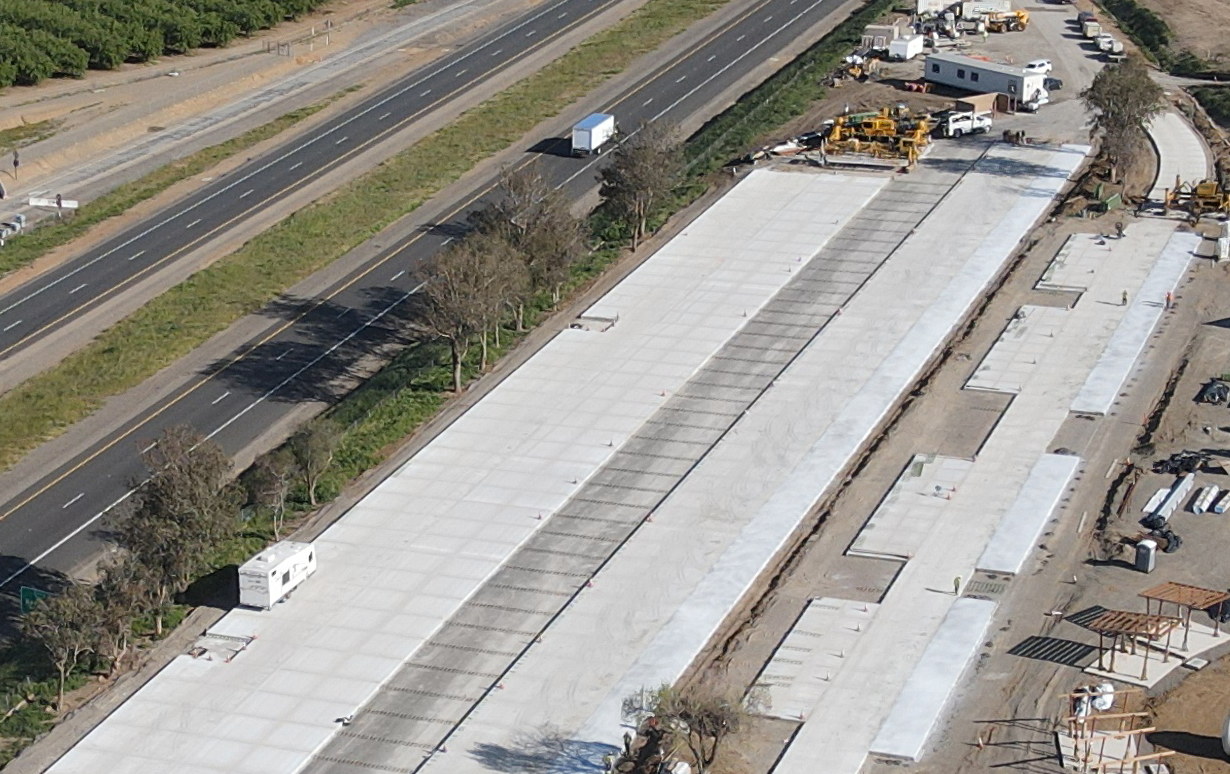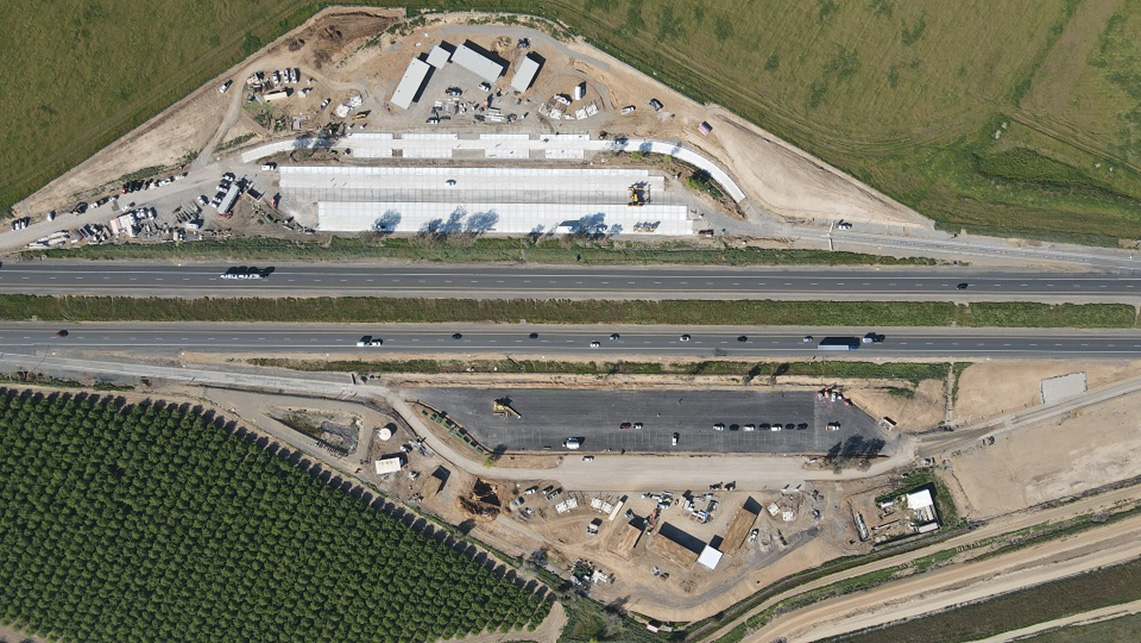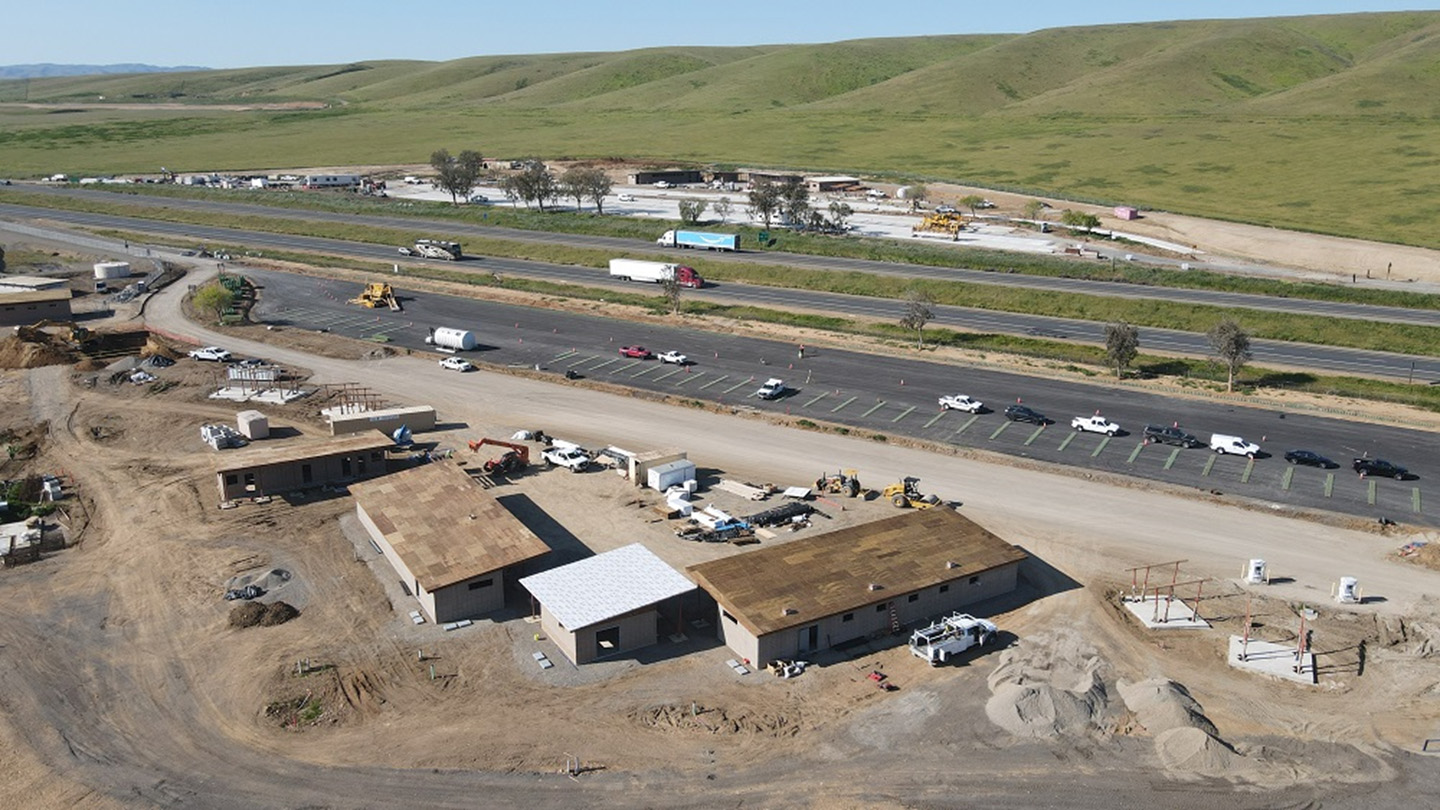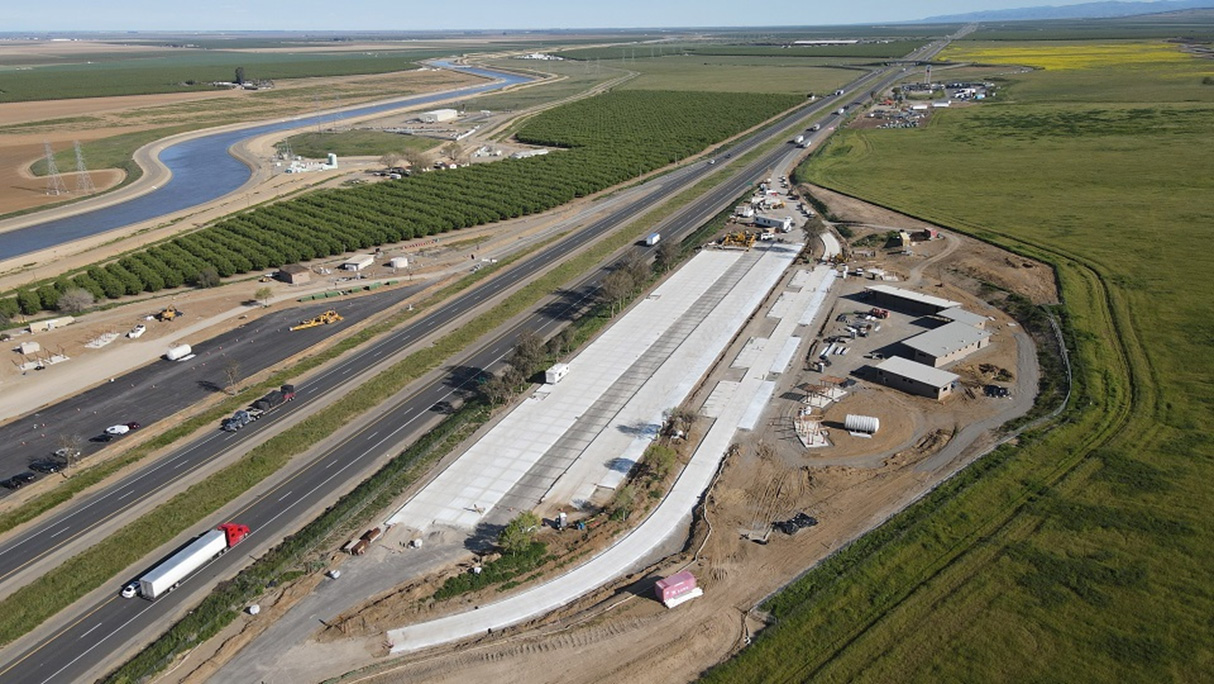Caltrans is taking a big step in sustainably modernizing California’s highway rest stops, with the John “Chuck” (J.C.) Erreca Safety Roadside Rest Area (SRRA) on Interstate 5 in Merced County serving as a model for the future.

This aerial view of the southbound portion rest area project shows the mostly completed concrete pavement strip pours, which were done with a Gomaco paver. Notice how the exterior strips were poured, leaving an access lane down the middle. This enables placing the middle strips last without trucks having to drive over previously poured concrete.
The J.C. Erreca Safety Roadside Rest Area is currently being transformed into a model for new Caltrans California highway rest stops, with long-life concrete pavement, reconstructed comfort stations, increased capacity, and upgraded utilities to provide modernized, safe, and reliable stopping opportunities for motorists. This rest stop project launches the effort to address the aging and capacity-deficient state of most of California’s rest areas.
Additional work being performed includes upgrades to comply with current ADA and Cal-OSHA requirements, and energy-efficient elements that meet the California Green Building Code.
Work began April 4th on the estimated $27.9-million project, which is currently 45% complete. The funding source for this project is the State Highway Operation and Protection Program (SHOPP) – Safety Roadside Rest Area Rehabilitation Program.

Once completed, this area will be the most sustainable ever built by Caltrans, featuring low-power demand and low-water usage. The new, long-life concrete pavement is designed is designed to perform well for at least 40 years, with little to no maintenance required.
The contract for the project was awarded to Walsh Construction, who is performing the concrete paving work, along with the demolition and replacement of the existing northbound and southbound rest area comfort station buildings, which were in a state of deterioration, requiring constant repairs due to their age and worn-out amenities.
To date, more than 6,500 cubic yards of soil have been moved in the grading operation, nine new building have been constructed, and the majority of the concrete paving work on the southbound rest area has been completed.

New buildings on the northbound side of the rest area are taking shape. All of the water used in both the north- and southbound facilities will be pumped to a recycling building, top left. After the water has been recycled, it will be distributed to both sides to be used for landscaping irrigation.
Project work remaining to be done includes the concrete paving of the northbound rest area, installation of the Ultrafiltration System for the rest area’s water supply, electric controls for site operations, and landscaping. The water that’s going to be used in the restroom sinks – grey water – will be filtered and recycled to be used for irrigation.
Switching to Cooler, Sustainable, Long-Life Pavement
The existing asphalt pavement is being removed, ground up, and recycled as base material for the new pavement – a resilient, long-life, low-maintenance concrete pavement that will withstand the heavy I-5 truck traffic. The concrete pavement is a “cool” pavement, with a high albedo, meaning it reflects larger amounts of light energy from the sun back into the atmosphere, instead of absorbing it, and, as a result, pavement surfaces remain cooler than other pavement types. Concrete pavement is also more resilient when inundated with flood water.
More than 180,000 cubic feet of concrete is going into the project, strengthened by steel dowels. The car parking areas are being paved with 9”-thick Jointed Plain Concrete Pavement (JPCP), and the truck parking areas are being paved with 12”-thick JPCP.
Targeted completion for this model Safety Roadside Rest Area is September 2023, so, this fall, plan your travels on Interstate 5 – and your rest stops – accordingly, so you can visit this sparkling, cool, new roadside oasis.
Thanks go out to Skip Allum, Caltrans District 10 Public Information Officer, and Michael Smith, Infrastructure Solutions Manager, CEMEX, for their invaluable assistance with this article. And a big tip of the hard hat to Caltrans and District 10 for implementing long-life concrete pavement as the foundation for their sustainable, modern highway rest areas of the future.


